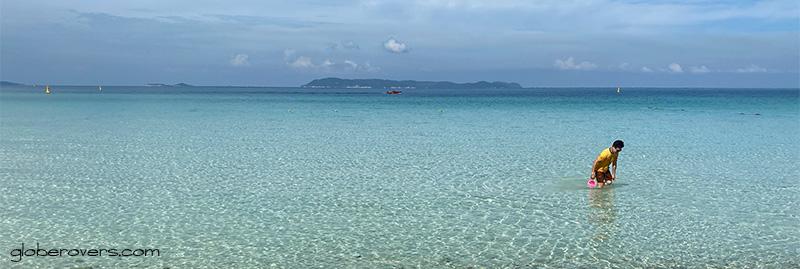
Region 7: The Northern Gulf of Thailand
(See bottom of post for links to more regions)
The few islands with accommodation in the Northern Gulf of Thailand, including the Bay of Bangkok, are often crowded during holidays and weekends due to their proximity to Bangkok and Pattaya. The more pristine islands have limited access and can only be reached by joining a day tour or renting a private boat.

Table of Contents
Location & Gateway
Located on the south-eastern side of the Bay of Bangkok, at the northern end of the Gulf of Thailand, this region is popular among the people of Bangkok as it lies a mere 100-200 kilometres (62-124 mi) from the city.
A popular destination near Bangkok, this region has many unexplored islands.
Some of the most beautiful islands in the region are under the control of the Royal Thai Navy. While overnight stays are not possible on these islands, a limited number of day visitors is allowed.
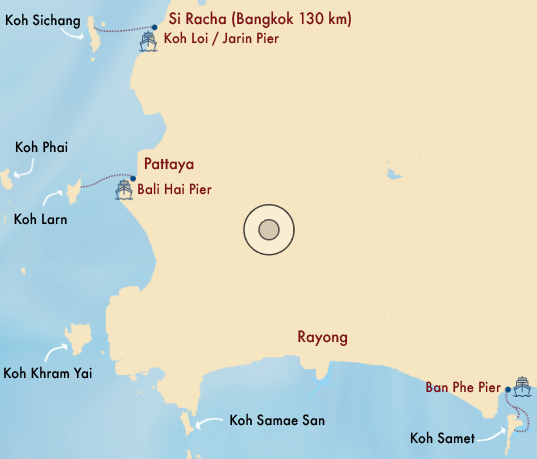
Notable Islands with Lodging
For overnight stays, the only options in this region include Koh Samet east of the city of Rayong, Koh Larn near Pattaya, and Koh Sichang near the town of Si Racha, just 100 kilometres (62 mi) south-east of Bangkok:
1) Koh Samet
Koh Samet lies along Thailand’s eastern seaboard just four kilometres (2.5 mi) from the Ban Phe Pier. It offers the perfect weekend getaway from Bangkok so is often crowded on weekends and public holidays, in particular during Songkran or Thai New Year. Even though it is part of the Mu Ko Samet National Park, this protected island has a vibrant nightlife scene during high season, including the usual fire juggling on the beaches and late-night parties.
The island has also fallen victim to over-development due to its proximity to Bangkok. Once a backpacker favourite for its empty beaches and cheap bungalows, it has now become an expensive destination. Koh Samet has about 15 beaches along the 7.3-kilometre-long (4.5 mi) road to its southernmost tip.
Rent a motorbike or bicycle and follow every little turnoff to discover another beach—the farther south you go, the more peaceful they get. Among the best, from north to south are Ao Tubtim, Ao Nuan, Ao Wong Duean, Ao Wai, and Ao Kiew Nok.
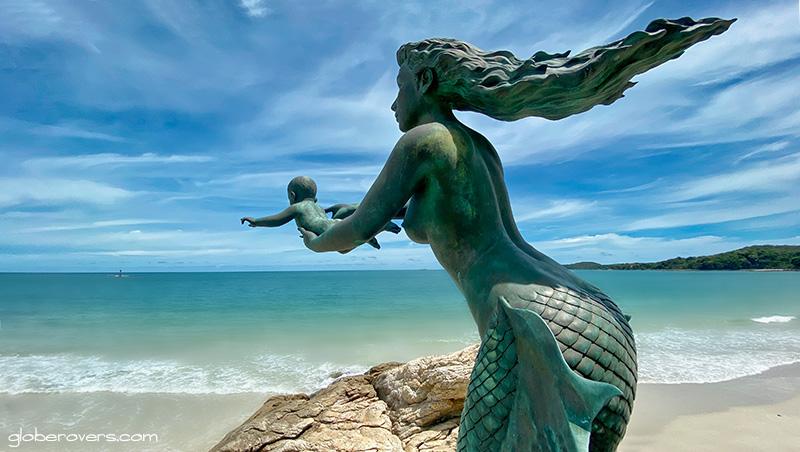
2) Koh Larn
Located to the east of Pattaya, Koh Larn measures only five kilometres (3.1 mi) from north to south and a mere two kilometres (1.2 mi) from east to west. It is renowned for being one of the most beautiful islands in close proximity to the cities of Bangkok and Pattaya.
The beaches are impressive with their fine white sand and clear water. Among the best beaches here are Tawaen, Nual, Tien, Ta-Yai, Sang Wan, Samae, and Tong Lang Beaches. Resorts and restaurants are scattered all over the island, but are more concentrated along the north-eastern side.

3) Koh Sichang
The closest island to Bangkok with accommodation is Koh Sichang, located west of Si Racha on the mainland. While the island is not known for its pristine beaches, Tham Phang Beach on the west coast is the island’s biggest and is quite acceptable. The main reason for visiting Koh Sichang is to enjoy its island lifestyle and attractions.
Among the many attractions of Koh Sichang are the Chao Pho Khao Yai Chinese Shrine with magnificent views over the island; the massive yellow Buddha statue at Wat Tham Yai Prik; nearby Tham Chakrabongse Sangha Monastery with its caves; and King Chulalongkorn’s Summer Palace built on the king’s order around 1890 as the summer residence for the Royal Family.
The main building, the Vimanmek Mansion, is the largest golden teak wood building in the world and was built without using a single nail. In 1901 it was dismantled and rebuilt in the Dusit Royal Gardens in Bangkok, but in 2018 it was again disassembled to replace its deteriorating wood and metal pilings. Its re-opening date is unknown.
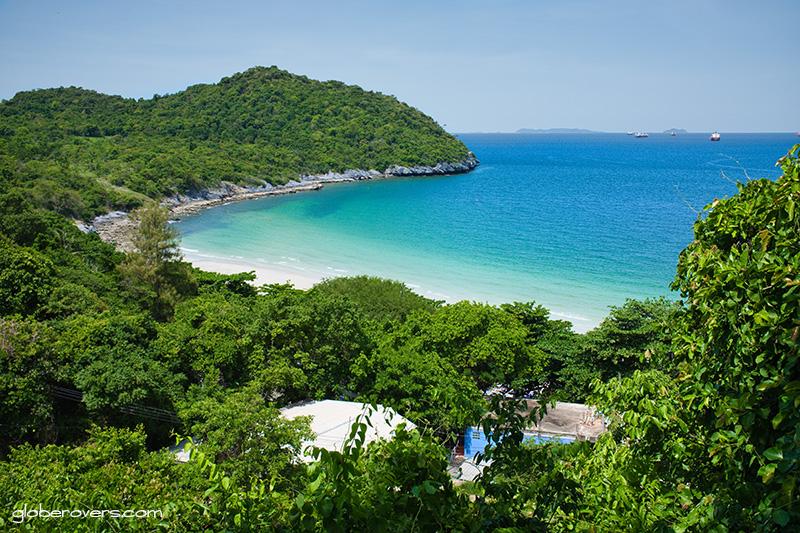
The Unspoiled Beaches
The best beaches in this region are on islands without any accommodation. However, both Koh Samet and Koh Larn offer accommodation with some notable beaches:
1) Ao Kiew Na Nok, Koh Samet
Ao Kiew Na Nok (also spelled Kiu or Kio) is debatably Koh Samet’s most beautiful beach, though the beach is the private property of the upscale Paradee Resort.
To enjoy this lovely beach you must either be a paying guest, or somehow get past the hotel security.
An extention of the Paradee Resort is on its sister beach, Ao Kiu Na Nai, on the western side of the island just across the island’s main road.
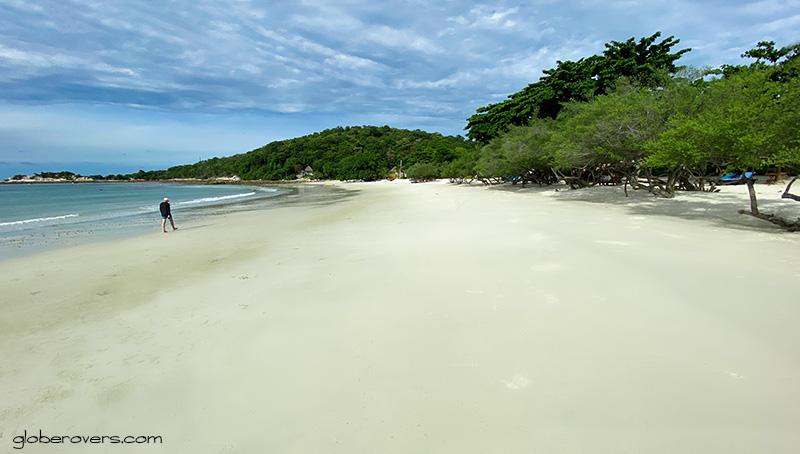
2) Ao Nuan, Koh Samet
Next in line for being the best beach on Koh Samet is Ao Nuan, a secluded sandy cove with a few scattered rocks backed by a wooded hillside. The basic Ao Nuan Bungalows is the ideal place to hear birdsong and the drills of cicadas rather than the noise of beach parties and screaming kids.
At the northern end on a small hill is Noina’s Kitchen, a delightful little retreat for Thai food while surveying the beach and seas.

3) Ao Wai, Koh Samet
Located in the southern half of the island, Ao Wai is a long powder-white beach with ample trees offering much-appreciated shade. A single property, the Samet Ville Resort, controls the entire bay.
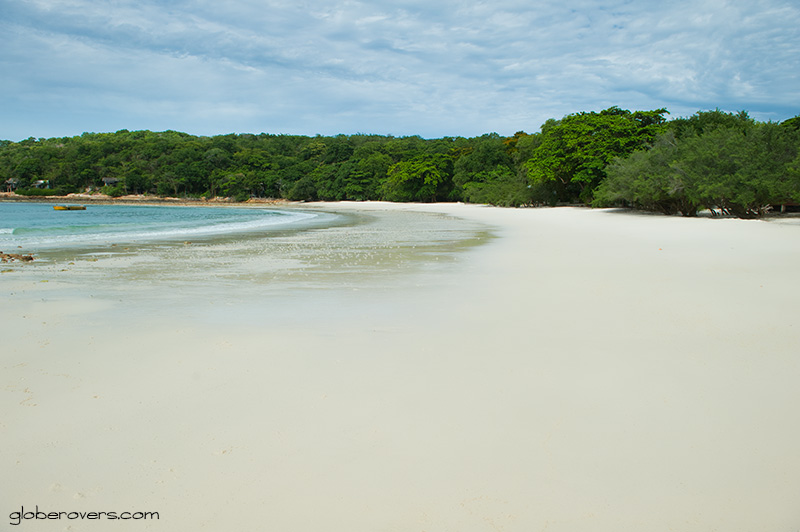
4) Tien Beach, Koh Larn
Located on the west coast of the island, Tien is the longest beach on Koh Larn but when it is crowded, head for the tranquility of the far ends of the beach. The sand is pure white and the water turquoise-blue.
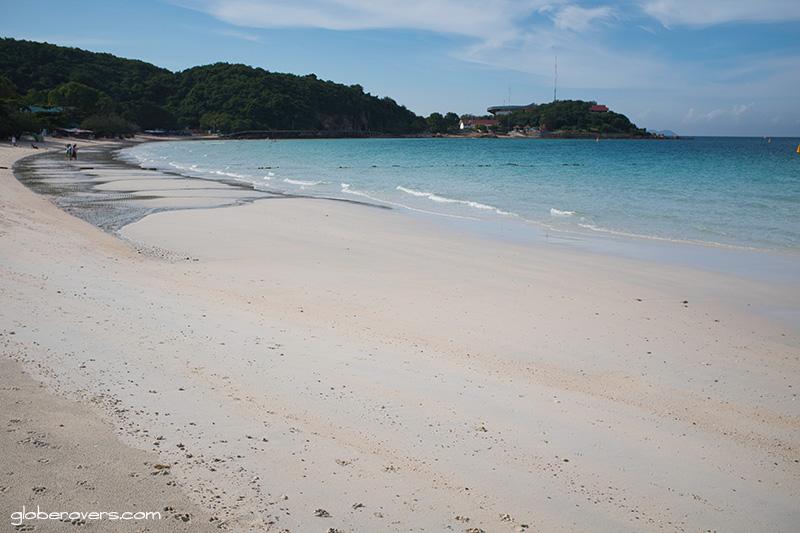
5) Ta-Yai Beach, Koh Larn
Tucked away at the northern tip of the island, Ta-Yai Beach is laid-back with powdery white sand and clear water, perfect for watching the sunset.
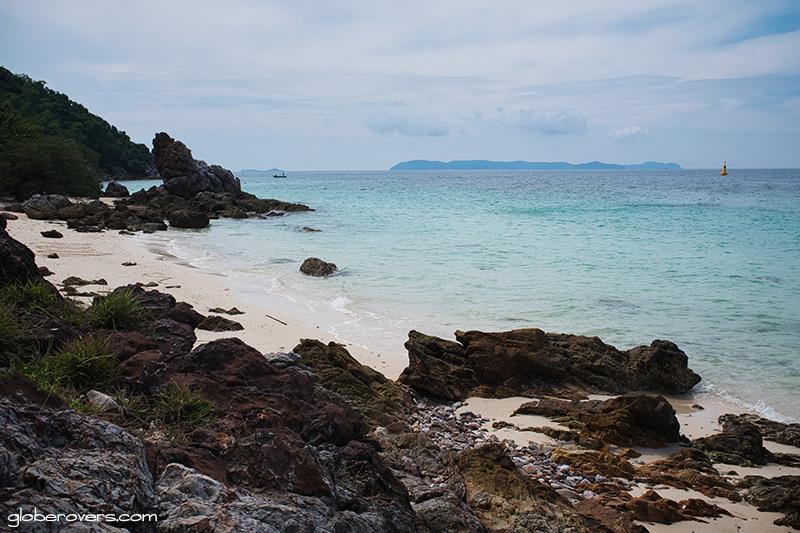
6) Islands without accommodation
Some of the region’s most pristine islands have no accommodation and are therefore not accessible by public ferry, but can be visited on a day-tour or by hiring a private boat. Some islands are under the control of the Royal Thai Navy and are either completely off-bounds to tourists, or allow day visitors only in designated areas.
Among these islands are Koh Samae San, Koh Khram Yai, and Koh Phai.
Koh Samae San is under the control of the Royal Thai Navy and while day visitors are allowed, overnight stays are not permitted.
Koh Khram Yai is an uninhabited island south of Koh Larn and also occupied by the Royal Thai Navy. It is popular among day visitors, in particular with snorkelling enthusiasts, though some beaches are off-limits as they are conservation areas for sea turtles.
Also known as Bamboo Island, Koh Phai lies directly west of Koh Larn. It is another pristine uninhabited island that is guarded by the Royal Thai Navy, but allows day-trippers to selected areas.
Practical Information
Getting there: For Koh Sichang, head to the Jarin Pier in Si Racha for daily ferries to Tha Lang Pier on the east side of the island. Koh Larn is easily reachable from Bali Hai Pier at the southern end of Pattaya Beach. Boats to Koh Samet leave from Ban Phe Pier east of Rayong.
Getting around: Of all the islands in this region, only Koh Samet, Koh Larn and Koh Sichang have a limited network of small roads, perfect for a rented motorbike or bicycle.
Sleep, eat and drink: The only islands in the region with accommodation are Koh Samet, Koh Larn and Koh Sichang. Koh Samet has the largest variety of accommodation and restaurants, including a few luxury resorts.
Due to their proximity to Bangkok, accommodation on these three islands comes at a premium compared to most other islands of Thailand.
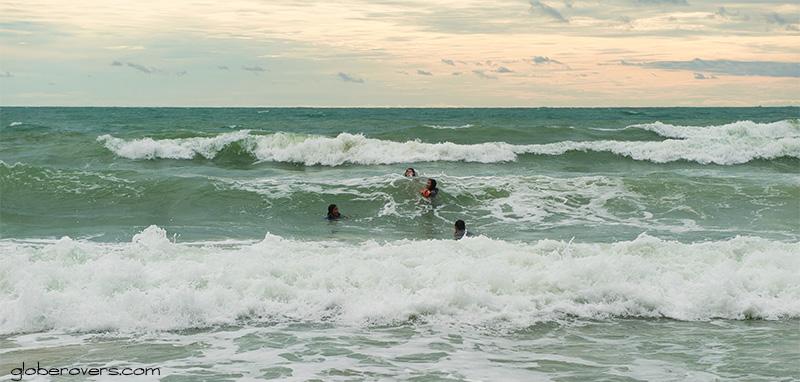
Deciding which of Thailand’s many islands is the perfect match for a dream holiday can be daunting. With almost 50 islands offering some form of lodging, and many having several beaches with accommodation—each with their own appeal—it is hard to choose the right spot.
In this age of increased tourism and ever-encroaching development, it is becoming more challenging to avoid the crowds and find an unspoiled and undeveloped island on which to stay.
We can only hope that Thailand will rein in its thirst for the tourist dollar and control the development of its islands to protect the pristine beaches and natural attractions for future generations
Links to all island regions of Thailand
Overview and map of Thailand’s Islands
Region 1: Southern Andaman (Koh Lipe area)
Region 2: Lower Central Andaman (Koh Mook area)
Region 3: Upper Central Andaman (Koh Lanta area)
Region 4: Northern Andaman (Koh Phayam area)
Region 5: Central Gulf of Thailand (Koh Samui area)
Region 6: Eastern Gulf of Thailand (Koh Chang area)
Region 7: Northern Gulf of Thailand (Koh Samet area) – YOU ARE HERE
The 10 Best Beaches on Thailand’s Islands
Notes when reading the details in each region
- In the Thai language, “koh” means “island”, so the correct way to refer to the island of Phuket, for example, is “Koh Phuket” rather than “Koh Phuket Island”. “Ao” means “beach”, so “Ao Nang” means “Nang Beach”. “Mu koh” means “archipelago”, so “Mu Koh Ang Thong” means “Ang Thong Archipelago” .
- Some of Thailand’s islands have the same or similar names. Some examples include Koh Chang in the Gulf of Thailand, and Koh Chang Noi along the northern Andaman Coast; and Koh Ngam Yai and Koh Ngam Noi near the town of Chumphon, which is far from Koh Ngam at the southeastern tip of Koh Chang near Cambodia.
- Covid-19 is decimating the tourist infrastructure on Thailand’s islands. Most tourist services, including accommodation and transport services, available pre-Covid are not currently accessible, and may not be restored for a while.
- While some islands can be reached by public ferries, speedboats and long-tail boats, some are only accessible by private boat rental.
- Much effort has been made to provide information that is as accurate as possible, but please do your own extensive research to get the latest information.
- This article focuses on the best beaches on islands with accommodation, though islands managed by the National Parks offering tents for rent are also included. We also include noteworthy islands and beaches of interest with no accommodation.
- This article is not intended as a comprehensive guide to all islands of Thailand.
☛ Read more: Blog posts of Thailand

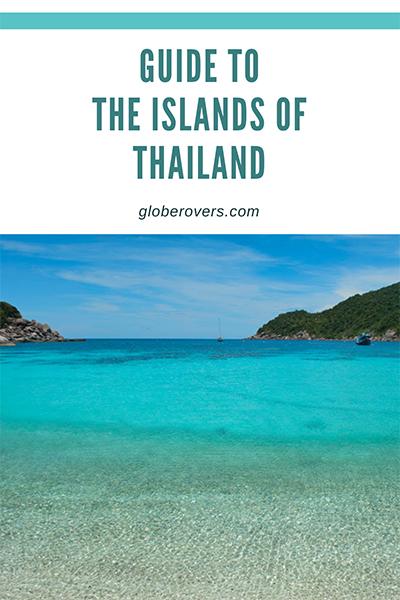
Additional Reading
CNN Traveler: The 11 best islands in Thailand
Top 10 Best Thai Islands that need to be on your bucket list

Blog post and photos by Peter who has been travelling almost full-time since 2005 and has been to over 122 countries. He visited several countries, such as Japan, more than 20 times. Peter is Editor-in-Chief and Publisher of GlobeRovers Magazine, an independent travel magazine focused on intrepid destinations.
